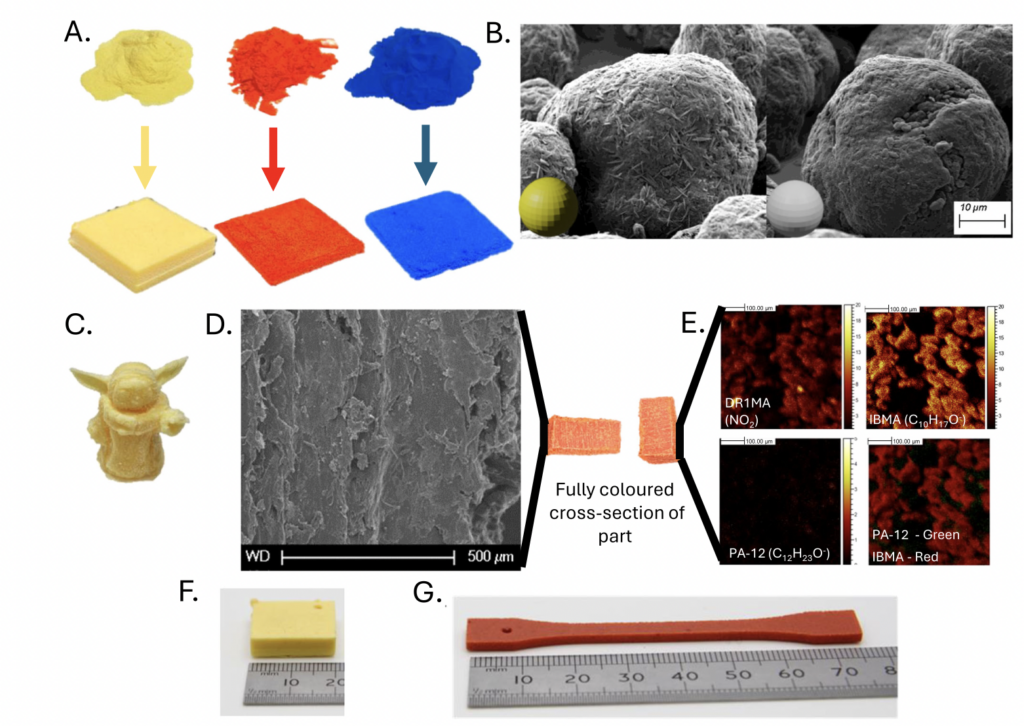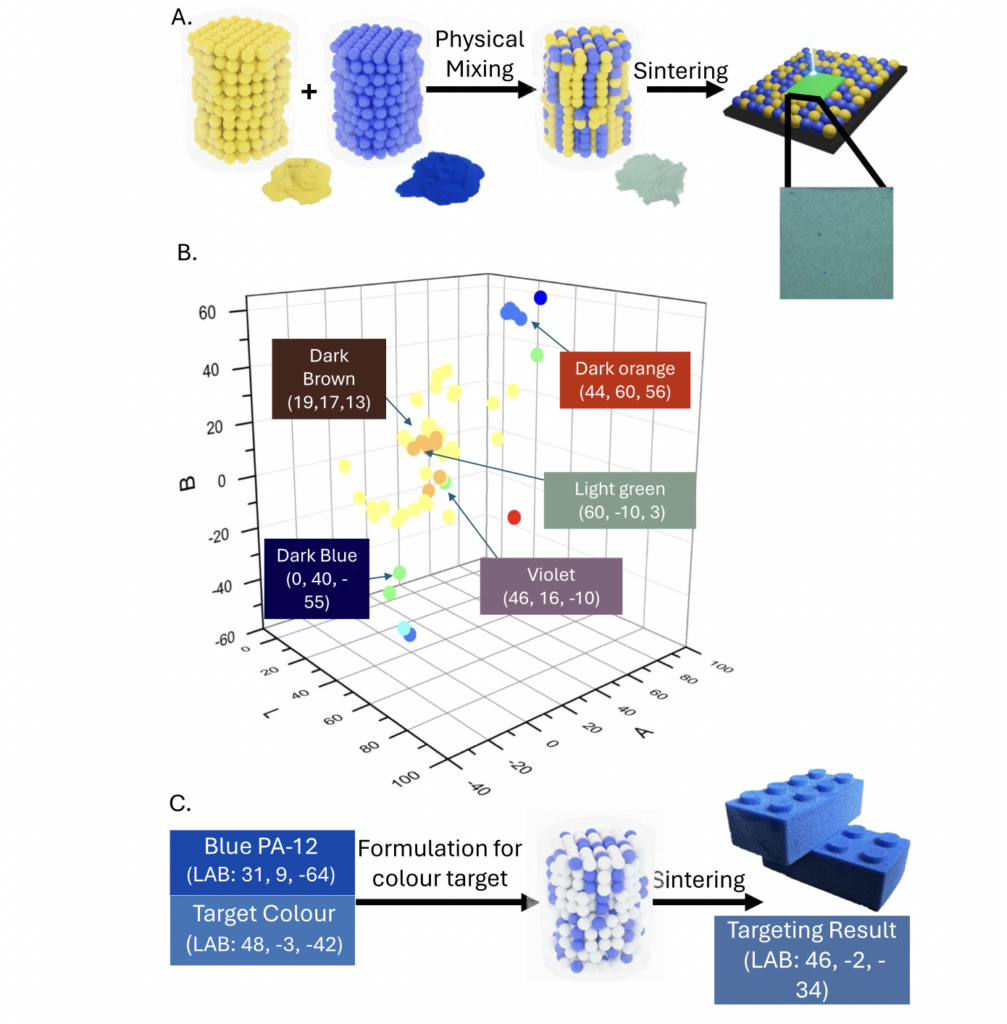“The real benefit of 3D printing or additive manufacturing is in the design and production of bespoke and unique objects, but its limitations are in the materials and palette of available properties that limit the overall application space. This new process provides an easy route to the development of a wide range of material capabilities without compromising processability,” stated Chris Tuck, Professor of Materials Engineering in the Centre for Additive Manufacturing in the Faculty of Engineering.
Professor Steve Howdle, Head of the School of Chemistry said,
There are a few challenges facing the 3D printing industry due to limitations on the functionality of the polymers used. To tackle some of these challenges we have created a simple but effective approach to adding functionality by coating the particles. We’ve designed the coloured shell polymer so that it matches the mechanical and thermal properties of the printing polymer. Most importantly we’ve demonstrated this with the key polymer (PA-12) that is ubiquitous to the industry. Our new coloured polymeric powders work perfectly in the existing commercially deployed machines. A key benefit of this process is that it can easily be incorporated into current commercial 3D printing processes and this could be potentially transformative for the industry in widening scope by introducing new functionality, simplifying processes and importantly achieving all of this sustainably.
Components are added to an autoclave along with supercritical carbon dioxide, poly(isobornyl methacrylate), and monomers. A polymerization reaction then forms a coating on the powder. This treated powder can then be used in the powder bed fusion process. The researchers tested it using an EOS Formiga P100, focusing on thin-walled objects, components with overhangs, and more. Only about 20% of the powder in the build chamber needs to be treated for the part to be uniformly colored.
Individual powders can be mixed in different ratios to achieve various colors. This allows for a simple system where certain powders are weighed to obtain different colors on any given day. The team also developed an algorithmic model to predict colors. Furthermore, the properties of the parts look promising, and there is not a significant shift in parameter sets either. Additionally, the team conducted a biofilm test and found that the coated parts were more resistant to bacteria and fungi than the non-coated parts.
I love this. It could indeed pave the way for more functional parts. The process appears easy to replicate and implement industrially as well. While some of the chemicals involved are harsh and would need careful handling, overall, this is a significant advancement. It enables the creation of a personalized color library, allowing for the quick production of colorful parts. Additionally, a hard coating could enhance the functionality of components, making them last longer without becoming waterlogged or discolored. Although not everyone may enjoy vacuuming out their machine every time, this technology could streamline the production of custom colors for companies like Heineken or Coca-Cola. I think this is a great tool and hope that it will see much wider use.
































